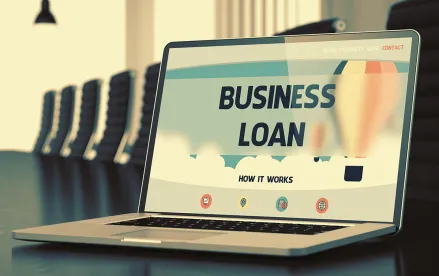Originally published on December 30, 2020 and updated as of February 1, 2021.
The Consolidated Appropriations Act, 2021 (the “CAA”), which provides $900 billion in new COVID-19 relief funding, was signed into law on December 27, 2020. Section 324 of Title III of the CAA, the Economic Aid to Hard-Hit Small Businesses, Nonprofits and Venues Act (the “Economic Aid Act”), introduces a new $15 billion grant program through which the U.S. Small Business Administration (the “SBA”) will provide aid to struggling live venue operators and certain related businesses. This program offers a critical lifeline from the Federal government for the nation’s performing arts venues, movie theatres and museums. Grants made under such program are referred to by the SBA and in this publication as “SVO Grants”.
This article details the key terms of the SVO Grant program and incorporates further guidance issued by the SBA in response to certain Frequently Asked Questions (the “1/27/21 FAQs”). For information about the changes implemented to the Paycheck Protection Program (the “PPP”) under the Economic Aid Act, see our article [Where Are We Now? -- Paycheck Protection Program Redux].
I. What Persons, Entities or Organizations are Eligible for an SVO Grant?
To be eligible to receive an SVO Grant, an entity or an individual must be (i) a live venue operator or promoter, theatrical producer or live performing arts organization operator; (ii) a motion picture theatre operator; (iii) a “relevant museum operator”; or (iv) a talent representative. There are specific requirements for whether an individual or entity fits within one of these categories:
-
Live venue operator or promoter, theatrical producer or live performing arts organization operator – For an individual or an entity, which may be for-profit, nonprofit, or government-owned, to qualify as a live venue operator or promoter, theatrical producer or live performing arts organization operator, it must either:
-
(i) have a principal business activity of organizing, promoting, producing, managing or hosting live concerts, comedy shows or theatrical productions or other events by performing artists for which (1) a cover charge is applied; (2) performers are paid in an amount that is based on a percentage of sales, a guarantee or another mutually beneficial formal agreement, and (3) generate at least 70% of earned revenue through ticket sales, production fees/reimbursements, nonprofit educational initiatives or the sale of event food, beverages or merchandise; or
-
In the 1/27/21 FAQs [Definitions #5], the SBA defined “cover charges” to include front door entrance fees, food or beverage minimums or other similar charges required for admission whether collected via ticket sales, addition to a tab or direct payment.
-
In the 1/27/21 FAQs [Revenue #1], the SBA defined both “earned revenue” and “gross earned revenue” in accordance with common principles of the accrual method of accounting, with “earned revenue” as only monies that organizations receive from the sale of goods or services and “gross earned revenue” as “the total of earned revenue from various sales of goods or services, such as admission tickets, merchandise, food and beverages, advertising sales and contracted presentation income.” These appear to mean the same thing.
-
In the 1/27/21 FAQs [Revenue #1 #2], the SBA clarified that earned revenue does not include other sources of funds, such as donations, sponsorships, governmental assistance, returns on investments, foundation grants, corporate sponsorships, individual gifts and other gratuitous contributions. In [Revenue #8], the SBA clarified that rental income from short-term rentals for event hosting and longer-term tenants is included in earned revenue.
-
In the 1/27/21 FAQs [Revenue #3, 5], the SBA explained how entities should calculate gross earned revenue with respect to fundraising events and memberships. According to the SBA, the same general principles apply to tax deductions for donations to charity. The amount an individual pays in connection with a fundraising event or membership that reflects the estimated value of the goods or services received in exchange must be included in gross earned revenue. Any amount that exceeds that estimated value is considered a donation and not included in gross earned revenue.
-
In the 1/27/21 FAQs [Revenue #4], the SBA stated that contributions and grants revenue are excluded from a nonprofit organization’s earned revenue, but noted that any Federal grants will be taken into account to determine whether the nonprofit meets the eligibility limit of having no more than 10% of its gross revenue from Federal sources.
-
-
-
(ii) have a principal business activity of making tickets available for purchase by the public at least 60 days in advance of live concerts, comedy shows, theatrical productions or other qualifying events for which a cover charge is charged and performers are paid in an amount that is based on a percentage of sales, a guarantee or another mutually beneficial formal agreement.
-
-
Motion Picture Theatre Operator – For an individual or entity, which may be for-profit, nonprofit, or government-owned, to qualify as a motion picture theatre operator, it must have as its principal business activity the ownership or operation of at least one place of public accommodation for the purpose of showing movies for a fee. Additional venue requirements apply to the spaces that qualify as a motion picture theatre (described below).
-
Relevant Museum Operator – For an individual or entity to qualify as a relevant museum operator, it must operate a public, tribal or private nonprofitagency or institution organized on a permanent basis for essentially educational, cultural heritage or aesthetic purposes. Operators of zoos and aquariums are also eligible under this category. Additional venue requirements apply to the spaces that qualify as a relevant museum operator (described below).
-
Talent Representative – For a person or entity that is an agent or manager, which may be for-profit, nonprofit or government-owned, to qualify as a talent representative: (i) 70% of its operations must involve representing or managing artists and entertainers; (ii) it must book or represent musicians, comedians, actors or similar performing artists primarily at live events in venues or at festivals; and (iii) such performers must be paid in an amount that is based on the number of tickets sold, or a similar basis (g., entrance fees).
-
In the 1/27/21 FAQs [Definitions #1], the SBA described that it will ascertain “principal business activity” under the existing SBA size regulations [13 CFR Sec. 121.107], and will consider the distribution of an entity’s receipts, employees and costs of doing business among the different lines of business activity in which its business operations occurred for the most recently completed fiscal year, but also noted that the SBA may “consider other factors, such as the distributions of patents, contract awards, and assets, as appropriate.”
-
In the 1/27/21 FAQs [Eligibility – Live Venue Operator or Promoter #7], the SBA stated that it “does not believe a secondary service provider supplying support to qualifying venues meets any eligible entity definition.” This may exclude vendors and providers of support, such as lighting, scenery, audio and visual and other equipment and services to theatrical productions, concerts and the like, despite the eligibility of the applicable venue, producer, promoter and manager.
-
In the 1/27/21 FAQs [Eligibility – All Applicants #1, Live Venue Operator or Promoter #5], the SBA made clear that entities of the type that are eligible that are owned by state or local governments (such as state college performing arts centers, museums or historic homes) are eligible to apply if the governmentally owned entity also acts solely as a venue operator, museum, etc., and does not also include other types of entities. As an example, the SBA stated that a city parks and recreation department that operates a bandstand in a public square along with running various nature parks would not qualify as an eligible entity.
-
In the 1/27/21 FAQs [Business Size/Employees #3], the SBA clarified that there is no cap on the number of employees an eligible business may have if it meets the other criteria and does not operate in either more than 10 states or another country.
-
Persons or entities that might otherwise satisfy the above criteria may nonetheless be ineligible (see Ineligible Entities and Persons below). Note that any entity that is a federally tax exempt organization under Section 501(a) of the Internal Revenue Code qualifies as a nonprofit for purposes of the SVO Grant program.
II. What Are the Eligibility Requirements?
To receive an SVO Grant a live venue operator or promoter, theatrical producer or live performing arts organization operator, relevant museum operator, motion picture theatre operator or a talent representative must satisfy certain eligibility requirements. To be eligible, such a person or entity seeking an SVO Grant:
-
Fully Operational – must have been “fully operational” as of February 29, 2020;
-
In the 1/27/21 FAQs, the SBA did not define “fully operational,” but in [Eligibility – All Applicants #2] the SBA simply stated that the entity must have been “in operation” (without the “fully” qualifier) as of February 29, 2020, and in [Eligibility – All Applicants #11], the SBA simply stated that an entity that was not “in operation” as of February 29, 2020, is ineligible for an SVO Grant.
-
-
Gross Earned Revenue Reduction – must have a reduction of at least 25% in gross earned revenue during (at least) one quarter of 2020 as compared to the corresponding quarter of 2019, or, [1/27/21 FAQs, Eligibility – All Applicants #3], if the entity was not in business in 2019, the test may be satisfied by comparing any of the second, third or fourth quarter of 2020 to the first quarter of 2020.
-
Resumption of Operations – as of the date of its receiving an SVO Grant, must:
-
for live venue operators, promoters, theatrical producers or live performing arts organization operators, have resumed or intend to resume organizing, promoting, managing or hosting future live events;
-
for motion picture theatre operators, have reopened or intend to reopen for the primary purpose of publicly showing motion pictures;
-
for relevant museum operators, be open or intend to reopen; and
-
for talent representatives, be representing or managing artists and entertainers.
-
-
Venue Requirements – must satisfy (or the venue applicable to an applicant must satisfy) certain venue-specific requirements:
-
for live venue operators, promoters, theatrical producers or live performing arts organization operators, the venues at which/for which events are promoted, produced, managed or hosted, and for talent representatives, the venues at which the artists/entertainers represented or managed perform must:
-
contain a defined performance and audience space, mixing equipment, a public address system and a lighting rig;
-
hire at least one individual to do at least twoof the following activities: (i) sound engineer; (ii) booker; (iii) promoter; (iv) stage manager; (v) security personnel; and (vi) box office manager;
-
have paid tickets or cover charges to attend most performances;
-
pay artists “fairly” (g.,artists do not play solely for free or for tips);
-
market performances (in print, online, mass media or on social media); and
-
solely for nonprofit venues that produce free events, produce events managed primarily by paid employees and not volunteers.
-
In the 1/27/21 FAQs [Eligibility – All Applicants #9], the SBA specified that mobile entities without defined performance and audience spaces are not eligible to apply. The SBA included the examples of circuses, fairs and entertainment businesses that provide talent at weddings/parties as entities that are not eligible for an SVO Grant unless they have a defined performance and audience space. In [Eligibility – Live Venue Operator or Promoter #1], the SBA also said a wedding or event venue would likely be ineligible because it would likely fail to meet multiple requirements, including defined performance and audience spaces, sale of tickets, marketing of events to the public, lighting rig, mixing equipment and employment of sound engineers, stage managers, box office managers, etc.
-
In the 1/27/21 FAQs [Eligibility – Live Venue Operator or Promoter #2], the SBA said that a sports stadium or venue used for concerts and other live, non-sport performances is likely not eligible to apply because the principal business activity of an eligible entity must be the organization, promotion, management or hosting of live concerts, comedy shows, theatrical productions or other events by performing artists, and sports are not a form of performing art.
-
In the 1/27/21 FAQs [Eligibility – Live Venue Operator or Promoter #3-4], the SBA said that a restaurant that features live music is not eligible to apply if the principal line of business (presumably this means the same as “principal business activity”) is restaurant operation rather than live venue operation. The SBA also said a dinner theatre might be eligible to apply if its principal business is the organization, management or hosting of live concerts, comedy shows, theatrical productions or other events by performing artists.
-
In the 1/27/21 FAQs [Eligibility – Live Venue Operator or Promoter #6], the SBA confirmed that a company that uses independent contractors instead of employees is eligible to apply (and that payments made to independent contractors (as reported on an entity’s Form-1099) are an allowable use of grant funds).
-
In the 1/27/21 FAQs [Eligibility – Live Venue Operator or Promoter #8], the SBA stated that a “theatrical production management business with revenue generated by the production management” may be eligible to apply as a talent representative, and that a theatrical producer may be eligible to apply even if less than 70% of its revenue came from cover charges or ticket sales if, as its principal business activity, it has production tickets available for public purchase an average of at least 60 days before the performance date.
-
In the 1/27/21 FAQs [Eligibility – Live Venue Operator or Promoter #9], the SBA clarified that a talent agency that books actors at live venues, but does not operate a live venue, may be eligible to apply if 70% of its operations is managing, booking or representing performers who appear primarily at live venues.
-
-
for motion picture theatre operators, a motion picture theatre must: (i) have at least one auditorium that includes a movie screen and fixed audience seating; (ii) have a projection booth (or other space) with at least one projector; (iii) have paid ticketing; and (iv) market movies (in print, online, mass media or on social media).
-
In the 1/27/21 FAQs [Definitions #3; Eligibility – All Applicants #7, 10], the SBA defined “fixed seating,” per the Economic Aid Act, as seating permanently fixed to the floor or ground. The SBA specifically stated that a venue with a multipurpose room with movable seating or a drive-in movie theatre without fixed seating is not eligible to apply because the Economic Aid Act specifically requires fixed seating and does not allow for temporary, removable, modular, convertible or other non-fixed seating arrangements.
-
-
In [Eligibility – All Applicants #8], the SBA clarified that a venue with outdoor fixed seating is eligible to apply as long as it meets all other eligibility requirements. For relevant museum operators, a relevant museum operator must have: (i) been serving as a relevant museum operator as its principal business activity; (ii) indoor exhibition space that is a component of the principal business activity and which has been subject to pandemic-related occupancy restrictions; and (iii) at least one auditorium, theatre, performance or lecture hall with fixed audience seating and regular programming.
-
In the 1/27/21 FAQs [Definitions #4], the SBA stated that the definition of “regular programming” may vary depending on the circumstances, but it is generally defining “regular programming” as programming provided on an ongoing and near-continuous basis of an average of at least four times a month over the course of a year in its qualifying theatre, lecture hall or similar venue.
-
In the 1/27/21 FAQs [Eligibility – Museum Operator #1], the SBA confirmed that the receipt of funding from a state government does not affect a museum’s eligibility for SVO Grants.
-
-
-
Certification of Need – must make a certification that the uncertainty of current economic conditions makes necessary the SVO Grant to support ongoing operations. A similar certification is required for PPP loan applicants, and the SBA has published guidance as to how to evaluate “necessity” in the context of that program. Persons seeking an SVO Grant should take care to create a thoughtful and detailed record demonstrating how necessity was determined and the lack of availability (or difficulty in obtaining) funds from other sources. (See our publication Paycheck Protection Program, Where Are We Now for a discussion of the necessity certification in that context.)
-
Section 324(b)(4) of Title III of the Economic Aid Act states that an eligible mid-sized business (defined as having between 500 and 10,000 employees) applying for an SVO Grant shall make a good-faith certification that the recipient of that grant (i) “will not abrogate existing collective bargaining agreements for the term of the loan and for two years after completing repayment of the loan” and (ii) “will remain neutral in an union organizing effort for the term of the loan.” These requirements, cross-referenced from the CARES Act, Title IV, are confusing because SVO Grants are not loans, so they do not have a “term.” The 1/27/21 FAQs issued by the SBA do not provide guidance about how to interpret these requirements.
III. Affiliation.
Recognizing the manner in which separate venues or productions may be organized, the Economic Aid Act specifically acknowledges that each business entity of an (otherwise eligible) applicant shall be treated as an independent, non-affiliated entity for purposes of this program. However, not more than five business entities of an eligible person or entity that would be considered its affiliates under the SBA’s (very broad) affiliation rules may receive SVO Grants. (See our publication Paycheck Protection Program, Where Are We Now for a description of those affiliation rules). This implies that an eligible person or entity, together with five of its affiliates (as defined under the SBA affiliation rules), may receive a total of six SVO Grants (see first bullet point below). It is not expressly stated whether initial grants and supplemental grants are counted as a single “grant” for purposes of such affiliation rules, but the structure of the program suggests that to be the case.
-
In the 1/27/21 FAQs [Subsidiaries #3], the SBA stated that “a maximum of five business entities of an eligible entity can receive an SVO [Grant],” which would imply that only five (and not six) affiliated entities may receive SVO Grants.
-
In the 1/27/21 FAQs [Subsidiaries #1], the SBA stated that for an entity with subsidiaries, the parent entity must meet eligibility criteria, but each subsidiary does not need to meet the criteria independently unless the subsidiary wants to apply for an SVO Grant in its own name. The SBA also stated that per the Economic Aid Act, for purposes of meeting eligibility criteria (i.e., calculating loss of revenues or employee numbers), a subsidiary entity that qualifies for an SVO Grant will not be treated as an affiliate of its parent entity or other subsidiary entities of such parent entity. This does not appear to affect the rule that grants can only be provided to a maximum of six (or five) affiliated entities.
-
In the 1/27/21 FAQs [Subsidiaries #2], the SBA explained that an entity that shares costs with its subsidiaries should keep records to show that all expenses claimed under the SVO Grant served grant purposes. If a subsidiary is eligible for and applies for its own SVO Grant, only the portion of the shared cost that the subsidiary pays can be paid for by the SVO Grant.
IV. Ineligible Entities and Persons.
The following categories of individuals or entities are ineligible to receive an SVO Grant:
-
Public Issuer – if it is or is majority owned or controlled by another entity that is an issuer, securities of which are listed on a national securities exchange;
-
In the 1/27/21 FAQs [Definitions #2], the SBA defined “majority owned or controlled” to mean at least 51% of the ownership interests in an entity (regardless of its legal structure) are held by a single individual or entity. Apparently this means that no further investigation of “control” is needed.
-
-
10% of Gross Revenue from Federal Funding – if it received or is majority owned or controlled by another entity that received more than 10% of gross revenue from Federal funding during 2019 (excluding certain disaster relief funding received under the Robert T. Stafford Disaster Relief and Emergency Assistance Act);
-
In the 1/27/21 FAQs [Revenue #7], the SBA clarified that the 10% maximum includes all Federal grants and funding regardless of the use, except disaster assistance.
-
-
Large Operator – if it or if it is majority owned or controlled by another entity with each of the following qualities:
-
owns or operates locations in more than one country;
-
owns or operates locations in more than ten States; and
-
employed more than 500 full-time employees as of February 29, 2020.
-
-
Foreign Entity – if it does not have a place of business in the United States, does not operate primarily in the United States, and does not make a significant contribution to the United States economy through payment of taxes or use of American products, materials or labor. The standard to make a “significant contribution” to the U.S. economy is not set forth;
-
PPP Borrower – if it received, on or after December 27, 2020, a PPP Loan (whether under a First Draw or Second Draw PPP loan);
-
PPP Applicant – In the 1/27/21 FAQs [Eligibility – All Applicants #5-6], the SBA confirmed that an entity may not apply for a PPP loan and an SVO Grant at the same time. Each entity must make a business decision as to which program best suits their needs and apply to that program. If an applicant is rejected by either program, it will then be eligible to apply for the other. It appears that if an entity merely applied for a PPP loan on or after December 27, 2020, it cannot apply for an SVO Grant even if it rescinded such application or returned the funds; or
-
Prurient Sexual Nature – if it presents live performances of a prurient sexual nature, or derives more than de minimisgross revenue through sale of products or services, or the presentation of any depictions or displays, of a prurient sexual nature.
V. Size of SVO Grants.
The total amount of SVO Grants that any individual applicant may receive (whether solely in the initial grant or taking together the initial and any supplemental grant) is capped at $10 million. Further, for relevant museum operators specifically, a relevant museum operator may not receive total grants in excess of $10 million for all relevant museums operated by the operator. Applying the affiliation rules (described above), an applicant, together with its affiliates that receive grants, cannot collectively receive more than $60 million (or $50 million, if the limit is for 5 and not 6 affiliates) (see “Affiliation” above) in SVO Grants.
-
Initial Grants – Subject to the $10 million cap noted above, initial SVO Grants are (i) for an eligible person that was in operation on January 1, 2019, equal to 45% of the gross earned revenue of the entity during 2019 and (ii) for an eligible person that began operations after January 1, 2019, equal to 6x the average monthly gross earned revenue for each full month of 2019 that the eligible person was in operation. The rules do not specify how the initial grant would be calculated for an entity that was not in business during 2019 but was by the February 29, 2020, eligibility date.
-
Supplemental Grants – Individuals or entities that receive an initial SVO Grant may receive a supplemental grant if, as of April 1, 2021, such person’s revenue for the first quarter of 2021 is not more than 30% of the revenue for the first quarter of 2019. Although not specified, “revenue” for the purposes of determining eligibility for a supplemental grant likely is “gross earned revenue” to stay consistent with the eligibility requirements for an initial grant. A supplemental grant will be equal to 50% of an initial grant (subject to the total $10 million cap on all SVO Grants received by the recipient). Supplemental grants cannot be administered until all applications for initial grants submitted within the program’s first 60 days have been processed. The rules do not specify how a supplemental grant would be calculated for an entity that was not in business during 2019 but was by the February 29, 2020, eligibility date.
-
In the 1/27/21 FAQs [Revenue #6], the SBA stated that a business that provides talent representation and financial services for athletes and entertainers should use its total gross earned revenue from all sources to calculate the amount of the SVO Grant for which it may apply, but the business would still need to satisfy the requirement that its principal line of business is talent representation, not financial services. This suggests that if an entity is eligible, it can count all its revenues, not just those that come from the principal line of business.
The SBA is authorized to establish alternative methods to calculate revenue losses for seasonal employers that would be adversely impacted if January, February and March are excluded from the calculation of year-over-year gross earned revenue.
VI. Priority of Disbursement of SVO Grants.
SVO Grants are to be allocated in an order of priority laid out in the Economic Aid Act. Up to 80% ($12 billion) of the funds appropriated for the SVO Grant program may be allocated to initial grants made to applicants eligible to receive grants in the 28-day priority period described below.
-
First Priority Period – During the first 14 daysof the program, the SBA may only award grants to (otherwise eligible) applicants with revenue for the period from 4/1/2020 through 12/31/2020 that is not more than 10% of such applicant’s revenue during the same period of 2019 due to the COVID-19 pandemic, or, for entities that were not “in business” in 2019, for any of the second, third or fourth quarter of 2020, not more than 10% of such applicant’s revenue during the first quarter of 2020.
-
Second Priority Period – During the next 14 daysof the program, the SBA may only award grants to (otherwise eligible) applicants with revenue for the period from 4/1/2020 through 12/31/2020 that is not more than 30% of such applicant’s revenue during the same period of 2019 due to the COVID-19 pandemic, or, for entities that were not “in business” in 2019, for any of the second, third or fourth quarter of 2020, not more than 30% of such applicant’s revenue during the first quarter of 2020.
-
Thereafter, initial grants of any remaining funds can be made to all other eligible applicants.
For purposes of calculating revenue, an applicant’s revenue does not include amounts received under the CARES Act (as amended) (i.e., PPP loans or other funding) and the SBA is to use the accrual method of accounting for determining revenue.
In addition to these priority periods, there is an added overlay of $2 billion of appropriated funds for the first 60 days of the program for grants to eligible persons or entities with 50 or fewer full-time employees. For such purposes, a “full-time” employee works at least 30 hours per week, and any employee working 10–30 hours per week counts as one-half (0.5) of a full-time employee. It appears that for these calculations, employees working fewer than 10 hours per week are not counted.
-
In the 1/27/21 FAQs [Business Size/Employees #1], the SBA clarified that the SBA is using the Economic Aid Act’s specific provisions re: the calculation of employees and SBA size regulations (13 CFR Sec. 121.106). A firm must calculate its average number of full-time employees for the prior year by calculating the number of full-time employees it had in each individual pay period, adding those numbers together and dividing the total by the number of pay periods in that year.
-
In the 1/27/21 FAQs [Business Size/Employees #2], the SBA clarified that there is no priority based on number of employees in the application process. The $2 billion of appropriate funds for small employers is a separate aspect of the awarding process than the priority periods.
VII. Permitted Uses of SVO Grant Funds.
Initial grants may be used for costs incurred between March 1, 2020 and December 31, 2021, and supplemental grants may be used for costs incurred through June 30, 2022. Note that this is different than a PPP loan where all expenses paid or incurred during the relevant period are counted for forgiveness purposes. Any initial grant proceeds not spent (on allowable expenses) within one year and any supplemental grant proceeds not spent within 18 months of disbursement must be returned to the SBA. SVO Grant funds may be used for any of the following:
-
payroll costs (as defined in the PPP, limited to the following and solely with respect to employees who have a principal residence in the United States) (note that the definition follows that the definition included in the PPP rules, but we understand that rather than prorating, an SVO Grant would just cover any payroll costs incurred during the relevant period)
-
salary, wages, commissions, similar compensation and payment of cash tips or the equivalent up to a $100,000 cap per employee on an annualized basis of cash compensation;
-
payment for vacation, parental, family, medical and sick leave;
-
allowance for dismissal or separation;
-
payment required for the provisions of group health care or group life, disability, vision or dental insurance benefits, including insurance premiums;
-
payment of any retirement benefit;
-
payment of State or local tax assessed on the compensation of employees; and
-
the sum of payments of any compensation to or income of a sole proprietor or independent contractor that is a wage, commission, income, net earnings from self-employment or similar compensation up to a cap of $100,000 on an annualized basis;
-
Payroll costs exclude (i) taxes imposed or withheld under chapters 21, 22, or 24 of the Internal Revenue Code of 1986 during the covered applicable period; (ii) qualified sick leave wages for which a credit is allowed under section 7001 of the Families First Coronavirus Response Act (Public Law 116–127); or (iii) qualified family leave wages for which a credit is allowed under section 7003 of the Families First Coronavirus Response Act (Public Law 116–127).
-
-
-
covered rent obligations (as defined in the PPP, any rent obligation under an agreement in effect before February 15, 2020);
-
covered utility payment (as defined in the PPP, payment for electricity, gas, water, transportation, telephone, or internet access for which service began before February 15, 2020);
-
covered worker protection expenditures (as defined in the PPP, operating or capital expenditures to facilitate the adaptation of the business activities of an entity to comply with requirements established or guidance issued by the Department of Health and Human Services, the Centers for Disease Control, or the Occupational Safety and Health Administration, or any equivalent requirements established or guidance issued by a State or local government beginning on March 1, 2020, such as ventilation systems, physical barriers, or an expansion of indoor, outdoor or combined business space);
-
scheduled payments of principal or interest on mortgages incurred prior to February 15, 2020 (but no prepayment of principal);
-
scheduled payments of principal or interest on any indebtedness or debt instrument incurred in the ordinary course of business that is a liability of the SVO Grant recipient and was incurred prior to February 15, 2020 (but no prepayment of principal);
-
payments to independent contractors (capped at) $100,000 in annual compensation for any individual employee of an independent contractor); and
-
other ordinary and necessary business expenses, including:
-
maintenance expenses;
-
administrative costs, including fees and licensing costs;
-
State and local taxes and fees;
-
operating leases in effect as of February 15, 2020;
-
required payments under any insurance policy; and
-
advertising, production, transportation, and capital expenditures related to producing a theatrical or live performing arts production, concert, exhibition or comedy show, except that an SVO Grant cannot be primarily for such production-related expenditures.
-
In the 1/27/21 FAQs [Use of Funds #1], the SBA stated that SVO Grant funds may be used to refund customers still holding tickets for cancelled performances, as a necessary and ordinary business expense.
-
-
-
Entities may not use funds to purchase real estate, to pay interest or principal on loans originated after February 15, 2020, to invest or re-lend, for political contributions, or for another use prohibited by the program administrator.
-
In the 1/27/21 FAQs [Use of Funds #2], the SBA clarified that SVO Grants may be used to reimburse an owner who loaned the business money to pay employees and operating expenses but only if such loan was incurred before February 15, 2020, and was made on commercially reasonable terms and formally documented as a standard, ordinary debt instrument. In the 1/27/21 FAQs, the SBA did not clarify whether prepayment of principal on a loan from an owner was permitted, and, if that is permitted, the SBA did not explain why SVO Grants could be used as prepayment of debt to an owner but not prepayment of debt to third parties.
-
VIII. Authority and Oversight.
The Associate Administrator for the SBA Office of Disaster Assistance will coordinate and formulate policies for the administration of these grants. Accordingly, while we anticipate that the Office of Disaster Assistance will implement an application process (perhaps akin to the disaster loan assistance page that exists for Economic Injury Disaster Loans), in the interim the SBA’s disaster assistance customer service center can be reached at 1-800-659-2955 or by e-mail at disastercustomerservice@sba.gov.
The SBA will provide increased oversight of eligible persons/entities receiving SVO Grants. Those receiving grants must retain records that document compliance with grant requirements for (i) four years for employment records and (ii) three years for all other records. SVO Grants may be audited, and in the case of fraud, will require repayment of misspent funds or result in legal action to collect.
The SBA is required to deliver to Congress by February 10, 2021, a plan for oversight and audit of the SVO Grant program. Further, beginning on February 25, 2021, the SBA must submit to Congress monthly reports that detail (i) total grants approved and disbursed, (ii) the total amount of grants received by each eligible person or entity, including any supplemental grants, (iii) the number of active investigations and audits of grants, (iv) the number of completed reviews and audits of grants under this section, including a description of any findings of fraud or other material noncompliance and (v) any substantial changes to the oversight and audit plan.
In the 1/27/21 FAQs [Application #1-3], the SBA provided more details about the application process:
-
[1/27/21 FAQs - Application #1] The SBA recommends that as it builds the application platform, applicants register for a DUNS number so they can then register in the System for Award Management (SAM.gov). The SBA also recommends applicants gather documents that demonstrate the number of full-time employees and monthly revenues, calculate the average number of qualifying employees over the prior twelve months, and determine the extent of gross earned revenue loss.
-
[1/27/21 FAQs - Application #2] SVO Grant applicants must register at SAM.gov to apply and cannot use an Individual Taxpayer Identification Number, Employer Identification Number or other means of identification or registration. Once an applicant has a DUNS number, they should immediately register in SAM.gov because the SAM registration can take up to two weeks once submitted.
-
[1/27/21 FAQs - Application #3] The SBA did not provide a date for when SVO Grant applications will open but stated that it is working expeditiously to open applications and encourages applicants to stay up to date by frequently visiting sba.gov/coronavirusrelief for information.
Vincent Indelicato, Patrick D. Walling, Grant R. Darwin, Lara B. Miller, Christina A. Robinson and Laura A. Peterson also contributed to this article.








 />i
/>i

